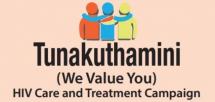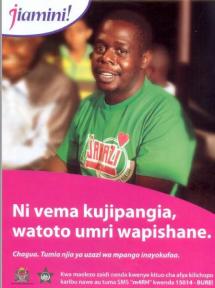Tanzania School Net Program Radio Spots
The Tanzania School Net Program involved distribution of treated nets to both children ages 6-14 years and heads of household as primary audiences, empowering these audiences to take action while clearly conveying the benefits of getting everyone covered – including neighbors – by drawing on popular “sharing” beliefs that exist in Tanzania. The school net program (SNP) also targeted primary school teachers, TCCP Community Change Agents, Ward Educational Coordinators, and other stakeholders, including local government authority (LGA) officials, heads of schools, ward and village officials.
The effort included community outreach, radio spots, district-wide events, and school activities.
Through the Patapata radio program, children were inspired to talk to their parents, friends, and communities about malaria prevention behaviors such as sleeping under a net every night, proper net use, net care and repair, and net sharing. Anecdotal feedback from Community Change Agents indicated that children enjoyed the program, and that parents reported increased interpersonal communication with their children about the importance of sleeping under the nets they were given at school.
These radio spots helped to advertise the program as well as the campaign.
Source: Johns Hopkins University Center for Communication Programs
Date of Publication: March 25, 2019
SIMILIAR RESOURCES
Tools
Examples
- Creative Concept Mockup Example
- Community Communication MNCH e-Manual: Participatory Health Promotion Sessions
- Nigeria Centre for Disease Control COVID-19 Resource Center
- Lever les Tabous: La sexualité et les approches promouvant l’égalité des genres pour mettre fin aux unions et aux mariages d’enfants, précoces et forcés
- SBCC for Malaria in Pregnancy: Strategy Development Guidance
- Transforming the Private Sector to Support Universal Malaria Diagnostic Coverage
- Guide to Strategic Communication Online
- COVID-19 Communication Materials for the Americas
- Girl Safety Toolkit: A Resource for Practitioners
- Incorporating Net Care into Malaria Social and Behavior Change Communication Strategies: A Step-by-Step Guide










